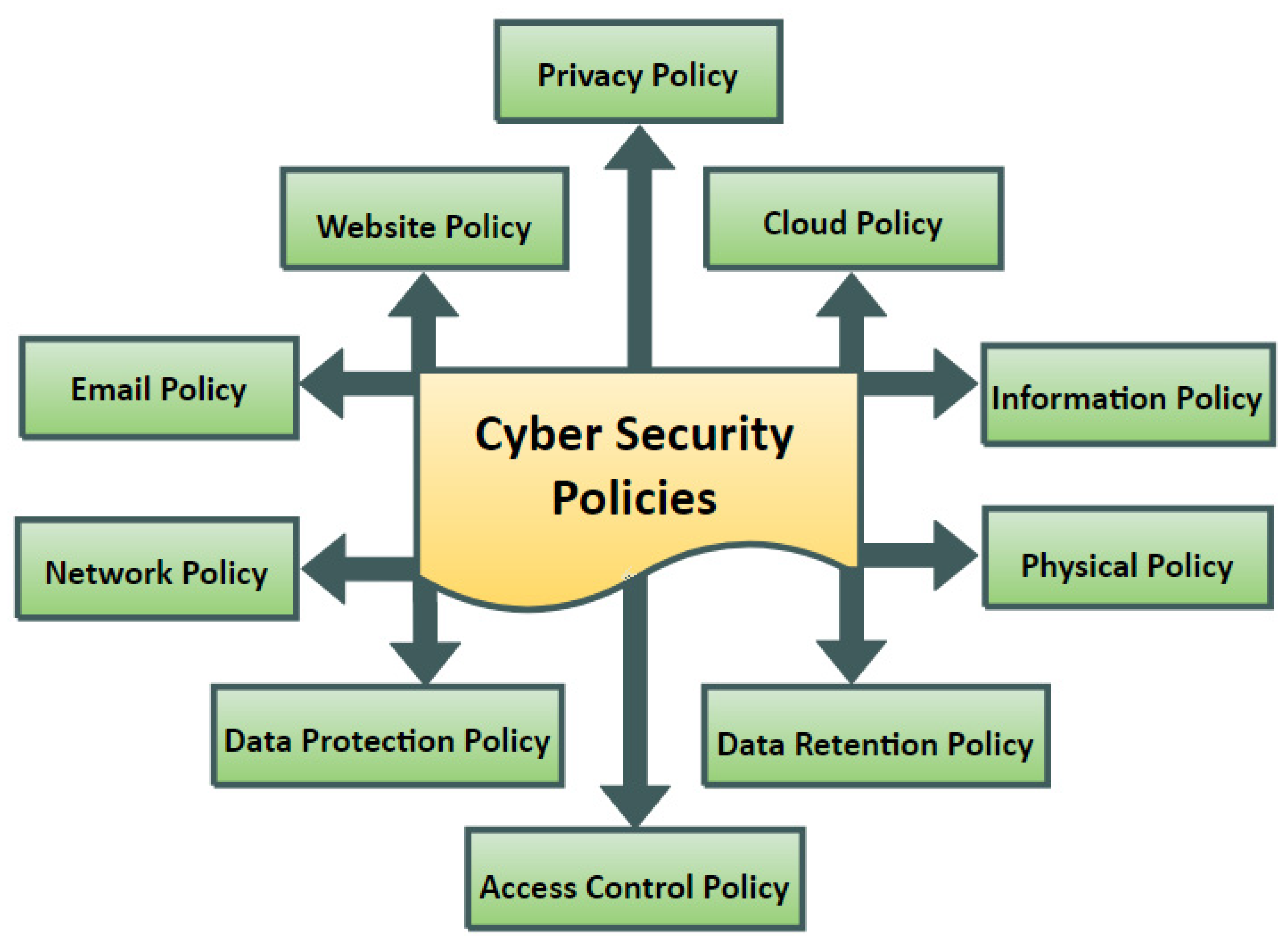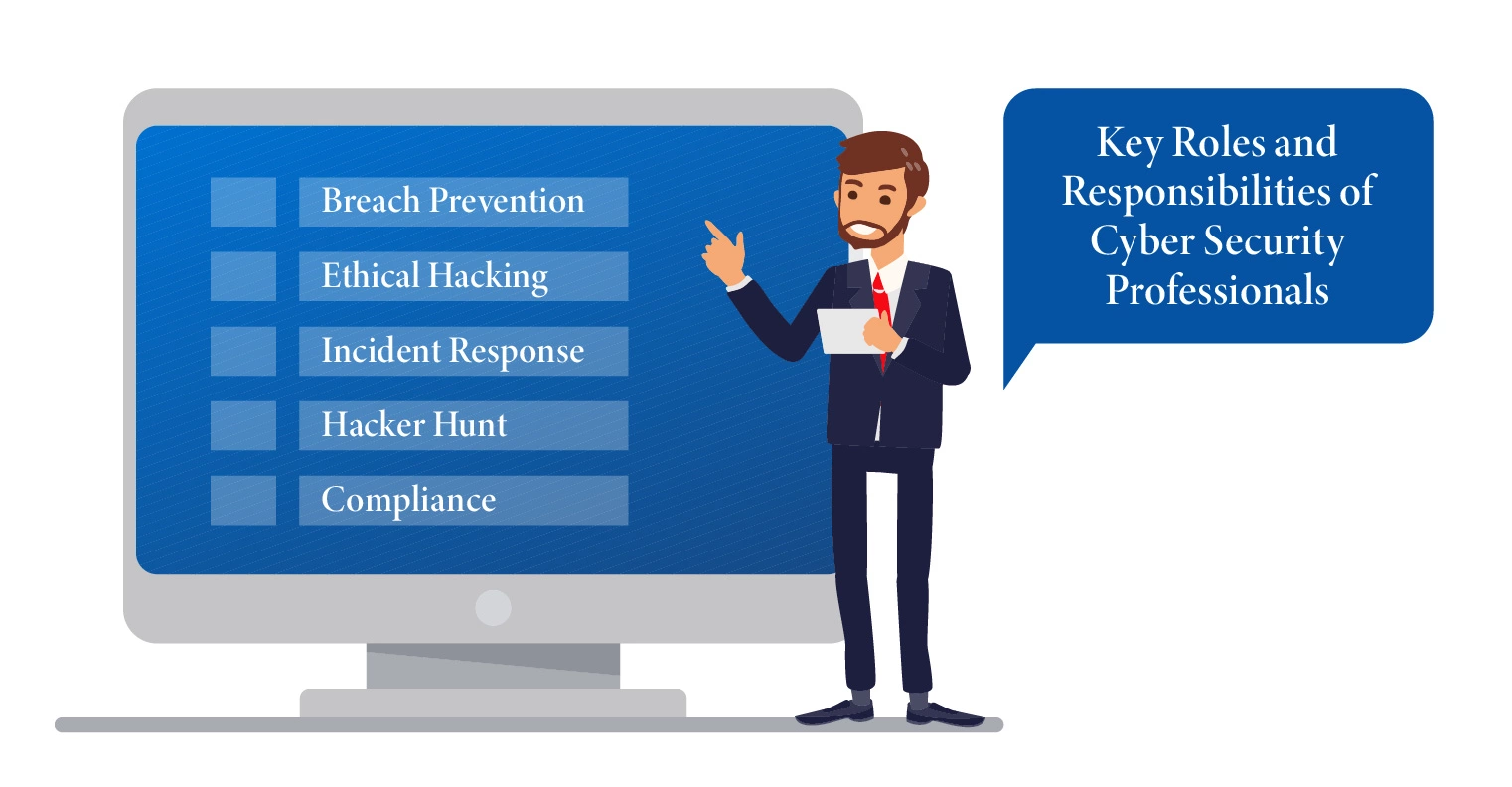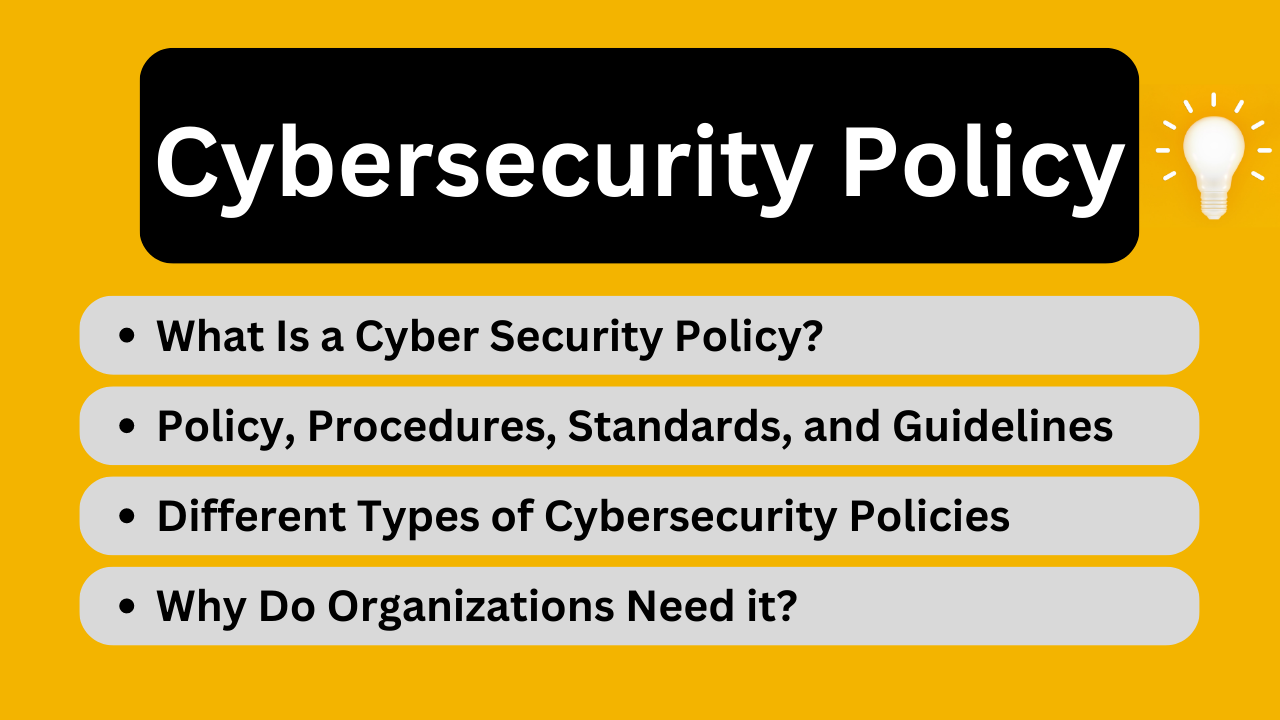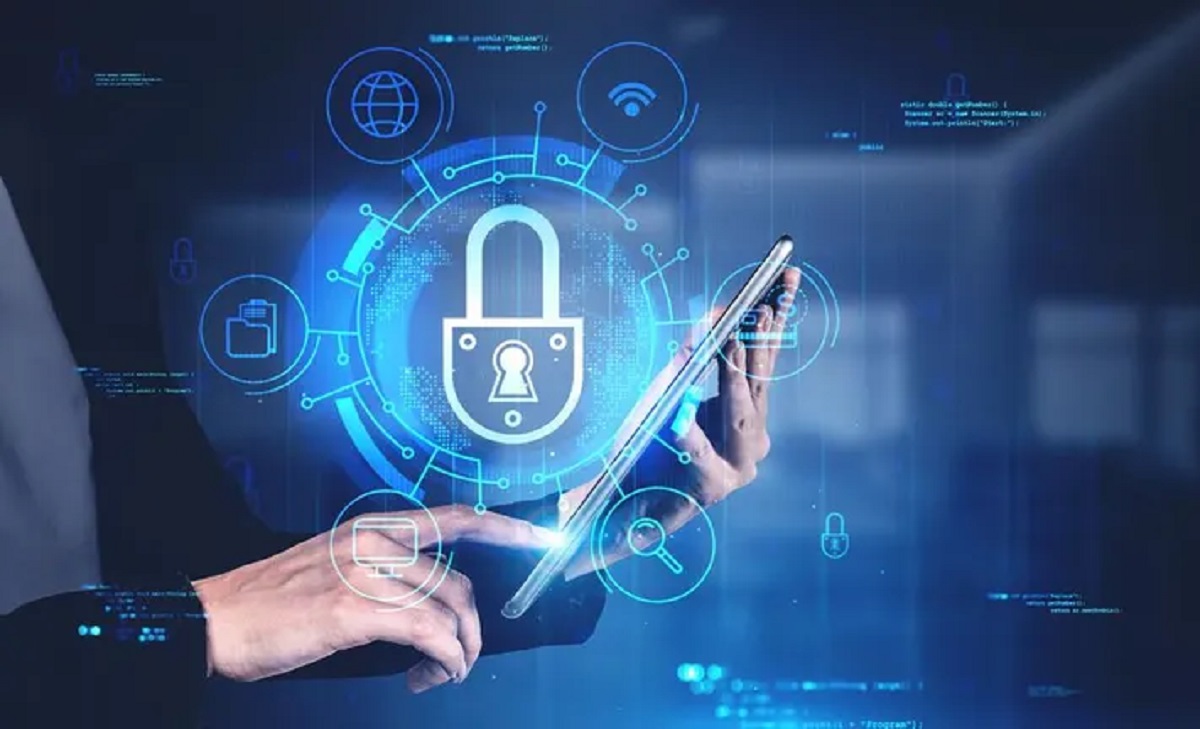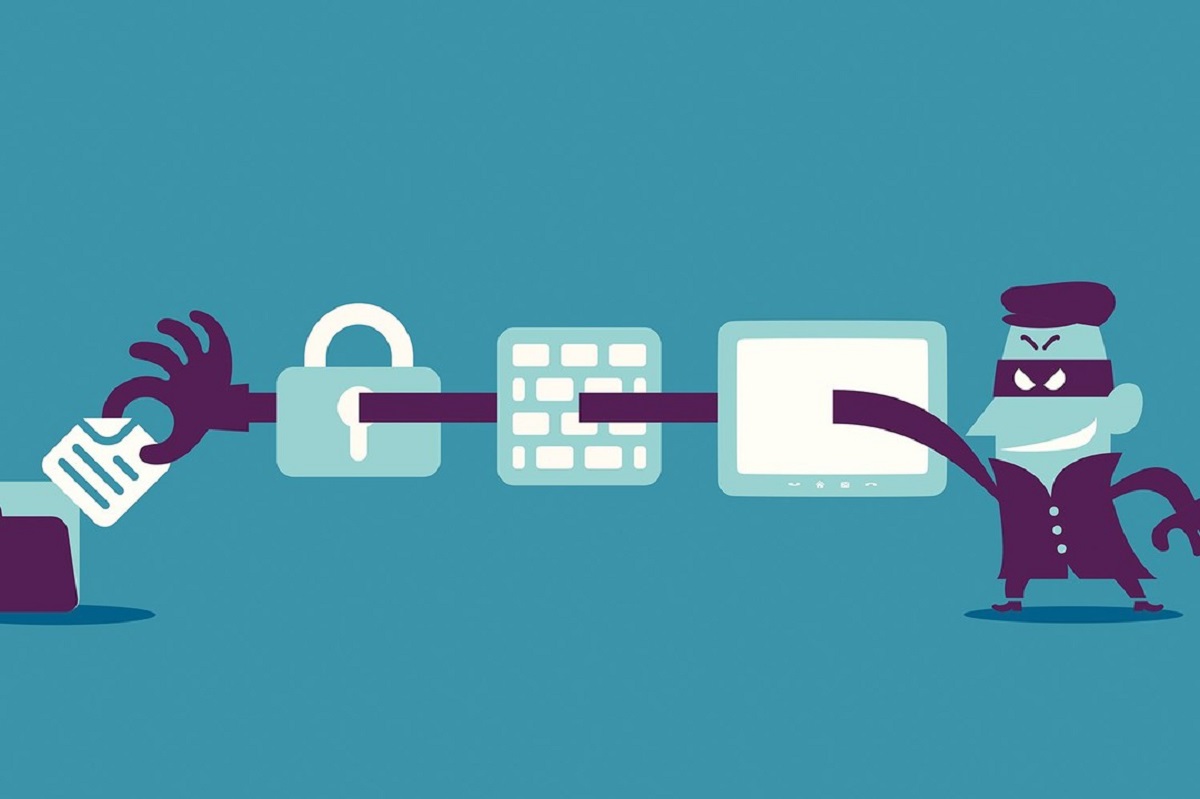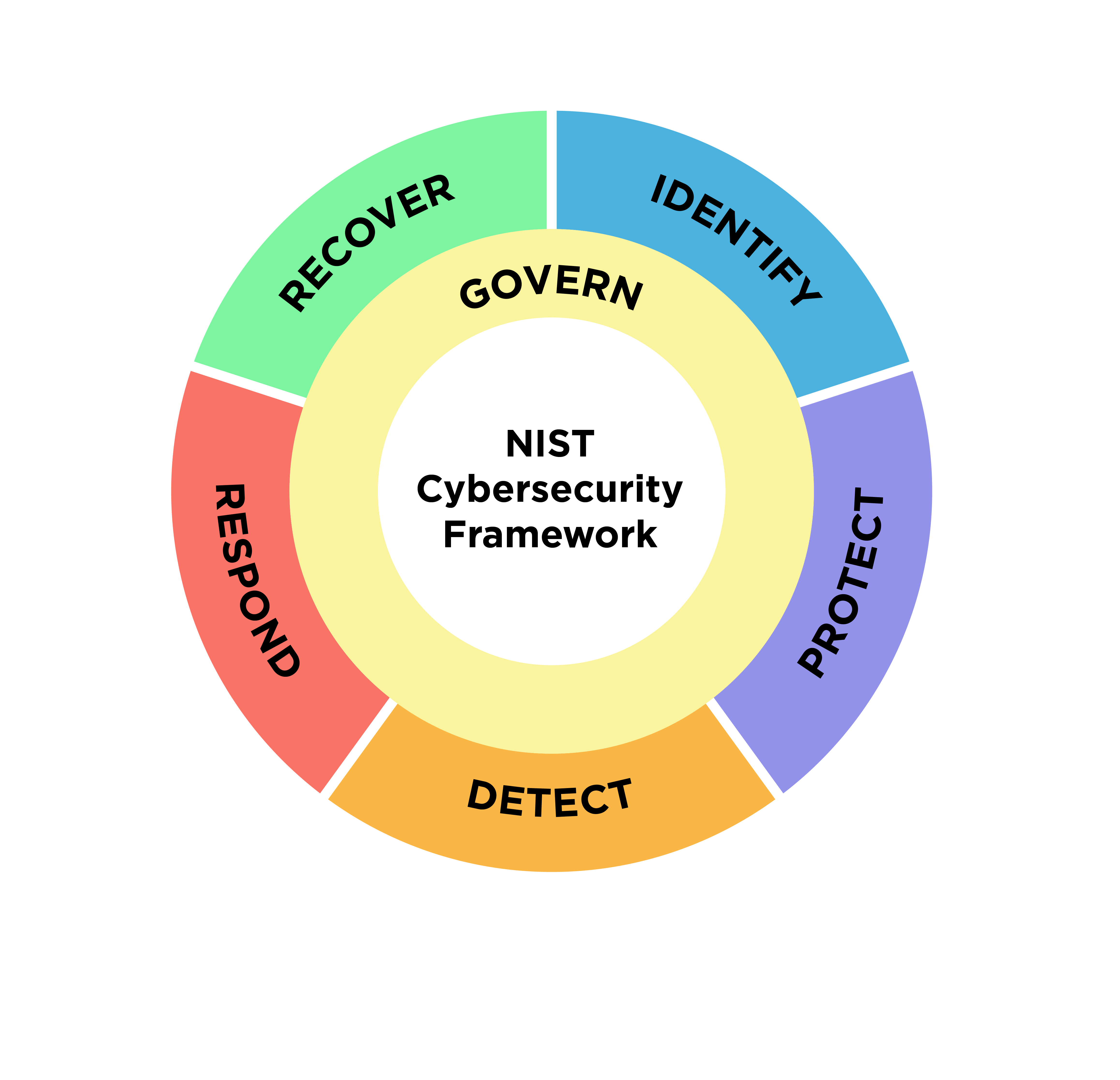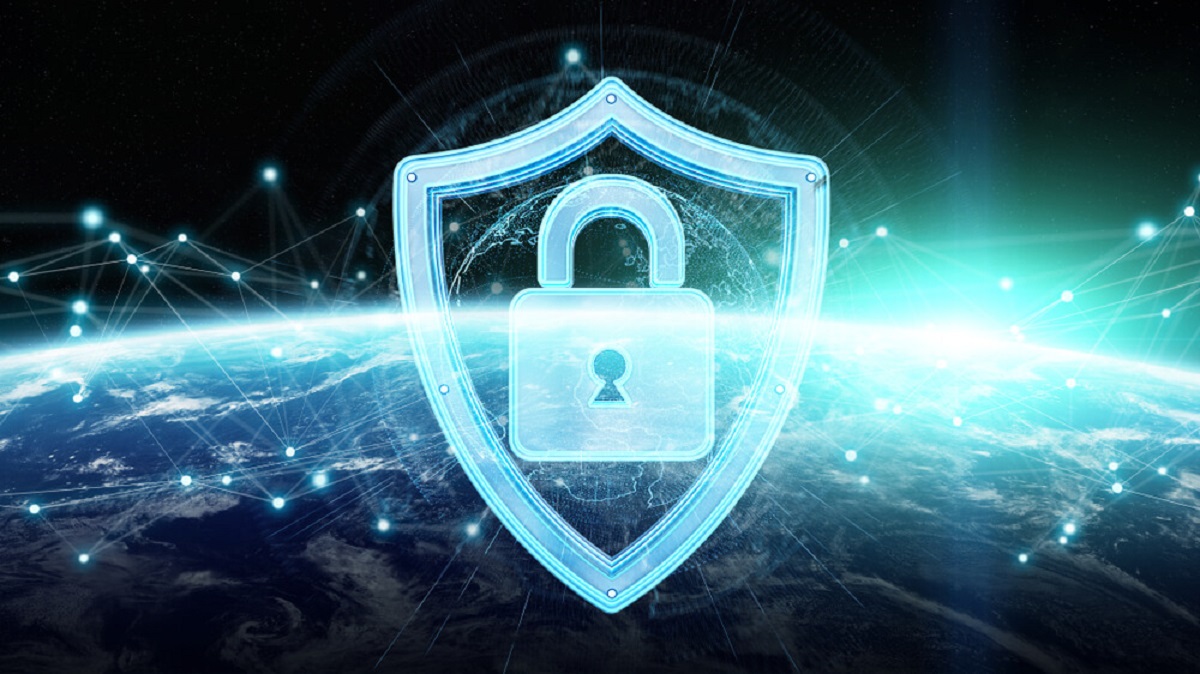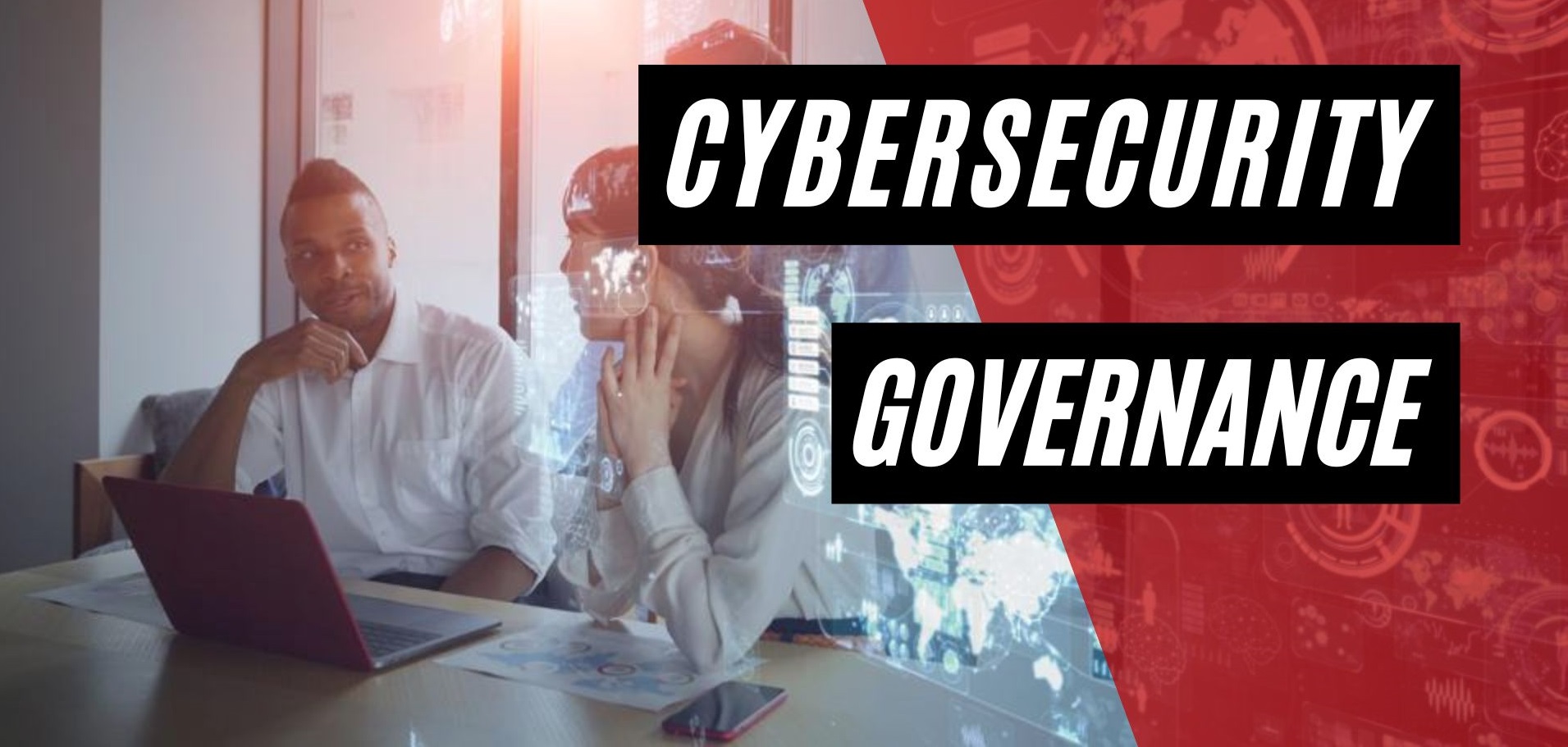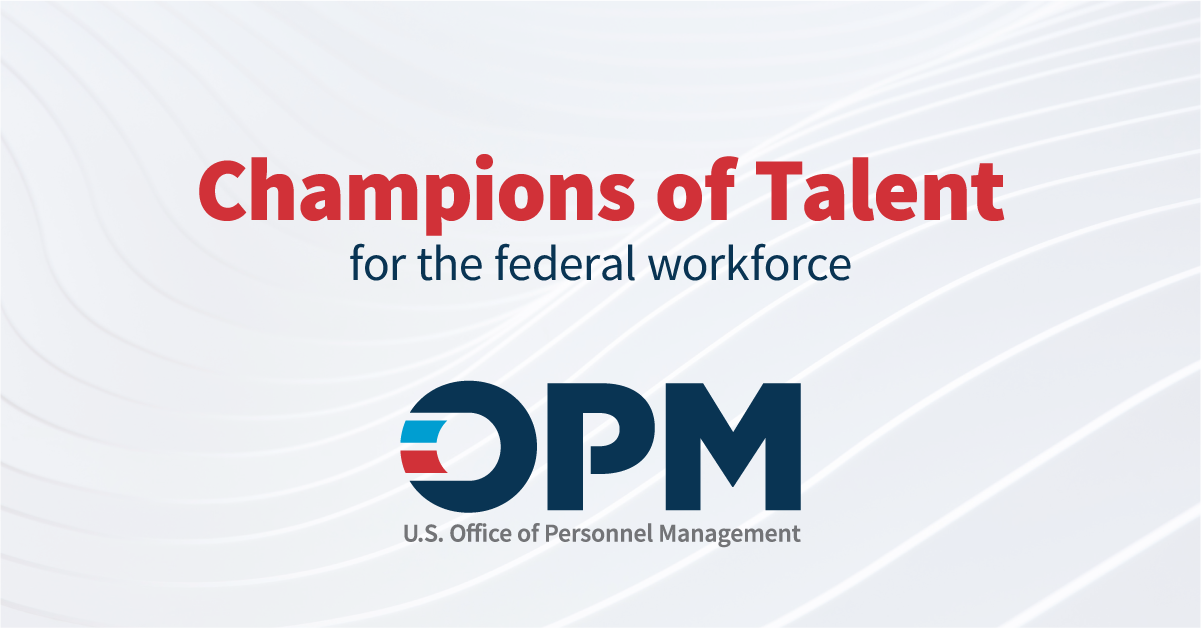Introduction
When it comes to cybersecurity, one of the primary goals is to establish robust authentication procedures. Authentication is the process of verifying the identity of a user or entity before granting access to a system, network, or sensitive information. It acts as the first line of defense against unauthorized access, data breaches, and insider threats. By implementing effective authentication measures, organizations can protect their digital assets, maintain compliance with regulations, and safeguard sensitive data.
As the digital landscape continues to evolve, with advancements in technology and increasing sophistication of cyber threats, the need for strong authentication procedures becomes even more crucial. Cybercriminals are constantly devising new techniques to bypass security measures and gain unauthorized access. Therefore, organizations must prioritize the implementation of authentication methods that ensure the highest level of security without compromising user experience.
This article will explore the importance of authentication in cybersecurity and highlight the various benefits it provides. It will also delve into common authentication methods and best practices for establishing effective authentication procedures. By understanding the significance of authentication and implementing the right strategies, organizations can significantly enhance their security posture and mitigate the risks associated with unauthorized access and data breaches.
Definition of Authentication
Authentication, in the context of cybersecurity, is the process of verifying and confirming the identity of a user or entity accessing a system, network, or digital resource. It ensures that only authorized individuals or entities gain access to sensitive information or services. Authentication plays a critical role in protecting against unauthorized access and maintaining the integrity and confidentiality of digital assets.
Authentication involves the use of credentials, such as usernames and passwords, biometrics, security tokens, or digital certificates, to establish the identity of the user or entity. It verifies that the claimed identity matches the one associated with the account or privilege being requested. By successfully authenticating, the user or entity is granted access to the authorized resources or granted specific privileges in the system.
Authentication is often combined with other security measures, such as authorization and encryption, to provide a layered approach to protect against unauthorized access. While authentication ensures that the user is who they claim to be, authorization determines what actions or resources the authenticated user can access.
It is essential to understand that authentication is not a one-time event; it occurs at various stages of the user’s interaction with a system. For example, when a user logs in to an application, they are required to provide their credentials. The system then compares these credentials with the stored ones to validate the user’s identity. Similarly, when accessing sensitive resources, additional authentication may be required to ensure that the user is authorized to access that specific resource.
Authentication methods can vary in their complexity and security levels. Password-based authentication is the most common and basic form of authentication, where users must provide a unique combination of characters known only to them. However, as the risk of password breaches and hacking techniques increases, organizations are adopting more advanced authentication methods, such as two-factor authentication (2FA) and biometric authentication, to enhance security.
In summary, authentication is the process of verifying the identity of users or entities seeking access to a system or sensitive information. It is a fundamental aspect of cybersecurity and serves as a crucial defense mechanism against unauthorized access.
Importance of Authentication in Cybersecurity
Authentication plays a critical role in cybersecurity by ensuring the integrity and confidentiality of digital assets. It is an essential component of any robust security framework and offers several important benefits:
- Protection against Unauthorized Access: Authentication acts as the first line of defense against unauthorized access to systems, networks, and sensitive information. By verifying the identity of users or entities, organizations can ensure that only authorized individuals can gain access, effectively preventing malicious actors from infiltrating their digital resources.
- Prevention of Data Breaches: Data breaches can lead to severe consequences, including financial loss, reputational damage, and legal implications. Robust authentication procedures help protect against data breaches by limiting access to sensitive information. By implementing strong authentication methods, organizations can significantly reduce the risk of unauthorized individuals gaining access to confidential data.
- Mitigation of Insider Threats: Insider threats, where authorized individuals misuse their privileges or unintentionally expose sensitive information, pose a significant risk to organizations. Strong authentication measures can help mitigate these threats by verifying the identity of users and monitoring their activities. This allows organizations to detect any suspicious behavior and take appropriate action to prevent potential insider attacks.
- Compliance with Regulations and Standards: Many industries have specific regulatory requirements and standards that organizations must adhere to. Authentication is often a mandated requirement to ensure compliance with these regulations. Implementing robust authentication procedures ensures that organizations meet the necessary security standards and can demonstrate their commitment to protecting sensitive data.
Ensuring the importance of authentication in cybersecurity cannot be overstated. By implementing strong authentication methods, organizations can enhance their overall security posture, minimize the risk of unauthorized access and data breaches, and maintain compliance with industry regulations. It is crucial for organizations to invest in the necessary resources and technologies to establish effective authentication procedures that align with their specific security needs.
Protection against Unauthorized Access
One of the primary purposes of authentication is to protect against unauthorized access to systems, networks, and sensitive information. By implementing robust authentication procedures, organizations can prevent malicious actors from gaining unauthorized entry and potentially causing significant harm. Here are some key ways in which authentication safeguards against unauthorized access:
- Verifies User Identity: Authentication verifies the identity of users before granting access to systems or sensitive information. By requiring users to provide unique credentials, such as usernames and passwords, organizations can ensure that only authorized individuals gain entry. This helps to prevent unauthorized users from infiltrating systems and potentially compromising data.
- Strong Password Requirements: Authentication typically involves the use of passwords as a means of verifying user identity. By establishing strong password requirements, such as minimum length, complexity, and periodic updates, organizations can enhance the security of authentication. Strong passwords make it more difficult for attackers to guess or crack the passwords, reducing the risk of unauthorized access.
- Multi-Factor Authentication (MFA): Multi-factor authentication adds an extra layer of security by requiring users to provide multiple pieces of evidence to prove their identity. This can include something the user knows (like a password), something they have (such as a security token), or something they are (biometric data). MFA significantly reduces the chances of unauthorized access, as it requires attackers to have both the user’s credentials and the additional factor of authentication.
- Access Controls and Privileges: Authentication allows organizations to implement access controls and privileges, ensuring that users only have access to the resources they require for their designated roles. By granting specific permissions based on job responsibilities, organizations can limit the potential for unauthorized users to access sensitive information or perform unauthorized actions.
- Monitoring and Auditing: Authentication procedures often include monitoring and auditing capabilities, allowing organizations to track user activity within the system. This enables the detection of suspicious behavior and potential unauthorized access attempts. Monitoring and auditing can help identify security vulnerabilities, such as repeated failed login attempts or unusual patterns of access, leading to timely intervention and prevention of unauthorized access.
By prioritizing authentication as a crucial cybersecurity measure, organizations can significantly reduce the risk of unauthorized access. Implementing strong password requirements, multi-factor authentication, access controls, and continuous monitoring bolster the overall security posture. With robust authentication procedures in place, organizations can protect their systems, networks, and sensitive information from unauthorized individuals seeking to exploit vulnerabilities.
Prevention of Data Breaches
Data breaches can have severe consequences for organizations, including financial loss, reputational damage, and legal penalties. Implementing robust authentication procedures is crucial in preventing data breaches and safeguarding sensitive information. Here are key ways in which authentication helps to prevent data breaches:
- Protects Access to Sensitive Data: Authentication ensures that only authorized individuals can access sensitive data. By verifying the identity of users before granting access, organizations can prevent unauthorized individuals from gaining entry to confidential information, reducing the risk of data breaches.
- Strong Password Policies: Authentication mechanisms often employ passwords as a means of verifying user identity. Organizations can strengthen security by implementing strong password policies, such as requiring complex passwords, enforcing regular password updates, and employing secure password storage practices. These measures make it more challenging for attackers to guess or crack passwords, minimizing the risk of unauthorized access to sensitive data.
- Multi-Factor Authentication: Multi-factor authentication (MFA) adds an extra layer of security by requiring users to provide multiple forms of identification. This could include something they know, like a password, something they have, like a security token, or something they are, like biometric data. MFA significantly reduces the risk of data breaches by adding an additional barrier for attackers to overcome.
- Access Controls: Authentication procedures allow organizations to implement granular access controls, ensuring that users have access only to the data they need for their respective roles. By limiting unnecessary access, organizations can reduce the likelihood of data breaches caused by unauthorized individuals gaining access to sensitive information.
- Monitoring and Intrusion Detection: Authentication systems often include monitoring and intrusion detection capabilities, enabling organizations to detect and respond to suspicious activity. By continuously monitoring user behavior, organizations can identify any unauthorized access attempts, potential breaches, or abnormal patterns that may indicate a security threat. Timely detection and response can prevent data breaches from escalating and minimize the impact on sensitive data.
- Secure Remote Access: With the rise of remote work, secure authentication procedures are vital in preventing data breaches. Implementing secure remote access solutions, such as virtual private networks (VPNs) and secure authentication protocols, ensures that remote employees can securely access sensitive data without compromising the organization’s security.
By implementing strong authentication measures, organizations can significantly reduce the risk of data breaches. Strong password policies, multi-factor authentication, access controls, monitoring, and secure remote access are critical components in preventing unauthorized access and protecting sensitive data from falling into the wrong hands.
Mitigation of Insider Threats
Insider threats, where authorized individuals misuse their privileges or unintentionally expose sensitive information, pose a significant risk to organizations. Authentication plays a crucial role in mitigating these threats and safeguarding against potential harm. Here are key ways in which authentication helps to mitigate insider threats:
- Identity Verification: Authentication procedures verify the identity of users before granting access to sensitive resources. By ensuring that individuals are who they claim to be, organizations can prevent unauthorized access by malicious insiders using stolen or compromised credentials.
- Privilege Separation: Effective authentication enables organizations to implement granular access controls, ensuring that users have access only to the resources required for their specific roles. By restricting unnecessary privileges, organizations minimize the potential for malicious insiders to access sensitive information beyond their authorized scope.
- Continuous Monitoring: Authentication systems often include monitoring capabilities to detect and track user activities. By continuously monitoring user behavior, organizations can identify any suspicious patterns, unusual access attempts, or deviations from normal usage. This enables the timely detection of insider threats and allows organizations to take appropriate remedial action.
- Auditing and Accountability: Authentication procedures enable organizations to maintain detailed audit logs of user activities. These logs provide a valuable resource for investigating incidents, identifying potential insider threats, and holding individuals accountable for their actions. By ensuring individuals are aware of the monitoring and auditing processes, organizations create a deterrent against insider misconduct.
- Regular User Access Reviews: Periodic reviews of user access privileges help identify potential insider threats. By conducting regular access reviews and comparing authorized access with actual utilization, organizations can promptly identify any discrepancies or signs of unauthorized activity by insiders. This allows for timely intervention and mitigation of potential threats.
- User Awareness and Training: Educating users about the risks associated with insider threats, social engineering techniques, and best practices for secure authentication is vital in mitigation efforts. By providing regular training and awareness programs, organizations can empower users to recognize and report suspicious activities, reducing the likelihood of successful insider attacks.
By implementing effective authentication procedures and adopting a proactive approach to mitigate insider threats, organizations can minimize the risk of internal breaches. Identity verification, privilege separation, continuous monitoring, auditing, regular access reviews, and user awareness are essential components of a comprehensive insider threat mitigation strategy.
Compliance with Regulations and Standards
In today’s highly regulated business environment, compliance with industry regulations and standards is of paramount importance. Authentication plays a crucial role in helping organizations meet these requirements and ensuring the security and privacy of sensitive data. Here are key reasons why authentication is vital for compliance:
- Data Protection Regulations: Many industries are subject to stringent data protection regulations, such as the General Data Protection Regulation (GDPR) in the European Union or the Health Insurance Portability and Accountability Act (HIPAA) in the healthcare sector. Authentication helps organizations meet these regulations by securing access to personal and sensitive information, preventing unauthorized disclosure or misuse.
- Industry Standards: Various industry standards, such as the Payment Card Industry Data Security Standard (PCI DSS) for the payment card industry, provide guidelines for securing sensitive information. Authentication is often a requirement in these standards to verify user identity, control access, and protect cardholder data. By implementing robust authentication procedures, organizations can demonstrate compliance with these industry-specific standards.
- Data Breach Notification Laws: Many jurisdictions have enacted data breach notification laws, requiring organizations to notify individuals affected by a data breach. Implementing strong authentication measures can help minimize the risk of data breaches and unauthorized access incidents, reducing the likelihood of triggering these notification requirements.
- Auditing and Accountability: Compliance regulations often mandate the establishment of auditing and accountability mechanisms. Authentication systems provide the ability to track and record user activities, allowing organizations to demonstrate compliance with requirements related to user access management, monitoring, and auditing.
- Secure Remote Access: With the increasing prevalence of remote work, secure remote access to systems and sensitive data has become a significant concern. Compliance regulations often require organizations to ensure secure remote authentication and access controls. By implementing secure authentication procedures, organizations can meet these compliance requirements and ensure the integrity and confidentiality of data accessed remotely.
- Third-Party Vendor Management: Many organizations rely on third-party vendors for various services. Compliance regulations typically require organizations to secure access to systems and data by third-party vendors. Authentication procedures help ensure that only authorized individuals can access sensitive resources, reducing the risk of unauthorized access by vendors.
By prioritizing authentication and establishing robust authentication procedures, organizations can demonstrate compliance with industry regulations and standards. Meeting these compliance requirements not only helps protect sensitive data but also builds trust among customers, partners, and regulatory bodies, safeguarding the organization’s reputation.
Common Authentication Methods
Authentication methods have evolved over the years to provide enhanced security and user convenience. Here are some of the common authentication methods used in modern cybersecurity:
- Password-based Authentication: Password-based authentication is the most widely used method, where users are required to enter a unique password to verify their identity. It is essential to use strong, complex passwords and avoid common patterns to enhance security.
- Two-factor Authentication (2FA): Two-factor authentication adds an extra layer of security by requiring users to provide two forms of identification. Typically, it combines something the user knows (password) with something they have (such as a one-time code sent to their mobile device) for enhanced authentication.
- Biometric Authentication: Biometric authentication uses unique physical or behavioral characteristics of individuals, such as fingerprints, retinal or iris scans, or voice patterns, to verify identity. Biometrics provide a high level of security and convenience, as they are difficult to forge and don’t require the users to remember passwords.
- Single Sign-On (SSO): Single sign-on allows users to authenticate once and gain access to multiple applications or systems without the need to re-enter credentials for each separate login. It improves user experience and reduces the risk of weak or reused passwords.
- Smart Cards and Tokens: Smart cards and tokens are physical devices that store authentication credentials. Users insert the smart card or use the token to generate a one-time code for authentication, providing an additional layer of security.
- Public Key Infrastructure (PKI): PKI is a system that uses digital certificates and cryptographic keys to authenticate users and validate their identity. PKI is commonly used in complex systems and in situations that require a high level of trust and security, such as online transactions.
- Multi-step or Adaptive Authentication: Multi-step or adaptive authentication methods dynamically adapt the level of authentication based on risk factors, such as the user’s location, device, or behavior. It allows organizations to apply stronger authentication measures when needed, providing a balance between security and usability.
Organizations should carefully consider their specific security requirements and user needs when selecting the appropriate authentication method. In some cases, a combination of various authentication methods may be used to provide layered security and defense against potential threats. It is important to continuously evaluate and update authentication methods to stay ahead of evolving cybersecurity threats.
Password-based Authentication
Password-based authentication is one of the most commonly used methods for verifying user identity. It relies on users providing a unique password that matches the one associated with their account. Passwords serve as a barrier against unauthorized access and play a crucial role in ensuring the security of digital resources. Here are key aspects of password-based authentication:
- Choosing Strong Passwords: Users must choose strong passwords that are difficult to guess or crack. Strong passwords typically include a combination of uppercase and lowercase letters, numbers, and special characters. The use of common words, personal information, or sequential patterns should be avoided as they make passwords more vulnerable to attacks.
- Password Storage: Organizations have a responsibility to securely store user passwords. Passwords should be encrypted using robust hashing algorithms, such as bcrypt or Argon2, which convert passwords into irreversible hash values. This ensures that even if the passwords are exposed, they cannot be easily deciphered.
- Password Policies: Establishing password policies is essential to enforce proper password practices. Policies may include requirements such as minimum password length, complexity, and periodic password updates. Educating users about password policies and the importance of creating strong passwords helps reinforce good security practices.
- Password Management: Users should practice good password management by avoiding password reuse across different accounts or systems. Using a password manager can help generate and securely store complex passwords for multiple accounts, eliminating the need to remember them all.
- Authentication Factors: Password-based authentication can be strengthened by incorporating additional authentication factors. For example, two-factor authentication (2FA) combines passwords with another factor, such as a one-time code sent to a mobile device, to provide an extra layer of security.
- Security Challenges: Passwords pose certain security challenges, such as the risk of weak or easily guessable passwords, password reuse, or social engineering attacks. Organizations must educate users about common security threats and train them on how to create and manage strong passwords properly.
While password-based authentication is prevalent, it is not infallible. Hackers employ various techniques, such as brute-force attacks or phishing, to obtain passwords. Organizations should complement password-based authentication with other security measures, such as multi-factor authentication and continuous monitoring, to enhance overall security and protect against potential password-related vulnerabilities.
Two-factor Authentication (2FA)
Two-factor authentication (2FA) is an authentication method that adds an extra layer of security by requiring users to provide two forms of identification to verify their identity. This method provides an additional level of protection against unauthorized access and helps mitigate the risks associated with password-based authentication alone. Here are key aspects of 2FA:
- How 2FA Works: 2FA combines something the user knows (such as a password or PIN) with something the user has (such as a mobile device or hardware token). To complete the authentication process, users must provide both factors to prove their identity. This adds an extra layer of protection as an attacker would need to possess both the user’s password and the additional factor in order to gain access.
- Types of 2FA: There are various types of 2FA methods available, including:
- One-time Passwords (OTP): A unique code is generated for each authentication attempt, typically sent to the user’s mobile device via SMS or generated by an authenticator app.
- Biometric Verification: Users authenticate themselves using their unique biological traits, such as fingerprints, facial recognition, or iris scans.
- Hardware Tokens: Users carry a physical device, such as a USB token, that generates a unique code for authentication.
- Smart Cards: Users insert a smart card with an embedded chip into a reader to verify their identity.
- Benefits of 2FA: 2FA provides several benefits, including:
- Enhanced Security: By requiring an additional factor beyond passwords, 2FA significantly reduces the risk of unauthorized access. Even if a password is compromised, the attacker would still need the second factor to gain entry.
- Protection against Phishing: 2FA makes it more challenging for attackers to deceive users through phishing attempts. Even if users unknowingly provide their credentials to malicious actors, the additional factor required for authentication would prevent unauthorized access.
- Adaptability and Flexibility: 2FA can be implemented across various platforms and devices, making it adaptable to different user preferences and organizational needs.
- User-Friendly Experience: Despite the added layer of security, 2FA can provide a user-friendly experience when using methods such as authenticator apps or biometric verification, as it reduces reliance on remembering complex passwords.
- Challenges with 2FA: While 2FA strengthens security, it is not without its challenges. Some considerations include:
- User Adoption: Getting users to adopt and integrate 2FA into their daily routines can be a challenge. Organizations must provide clear instructions and education to ensure users understand the benefits and importance of 2FA.
- Implementation Complexity: Deploying 2FA across different systems and platforms can be complex, requiring integration with existing authentication infrastructure. Organizations should carefully plan the implementation process and ensure compatibility with their existing technology stack.
- Cost and Resources: Depending on the chosen 2FA method, there may be associated costs for hardware tokens, software licenses, or maintenance. Organizations must evaluate the financial implications and allocate the necessary resources for implementation and ongoing management.
Overall, 2FA provides an additional layer of security beyond passwords and significantly reduces the risk of unauthorized access. It is an effective approach to enhance authentication security and protect against various threats such as phishing, credential theft, and unauthorized account access.
Biometric Authentication
Biometric authentication is a security method that verifies the unique biological characteristics of an individual to confirm their identity. It provides an advanced level of security by leveraging physical or behavioral traits that are difficult to forge or replicate. Here are key aspects of biometric authentication:
- Types of Biometric Traits: Biometric authentication utilizes various physical and behavioral traits, including:
- Fingerprints: The patterns of ridges and valleys on a person’s fingertips are unique and can be scanned and matched for authentication.
- Facial Recognition: This method uses facial features to identify and authenticate individuals by analyzing key facial characteristics and dimensions.
- Iris Recognition: Iris scanning technology examines the unique patterns in the colored portion of the eye to verify identity.
- Voice Recognition: Voice authentication analyzes the unique vocal characteristics of an individual, such as pitch, tone, and rhythm.
- Retinal Scans: Retina authentication uses an individual’s unique retinal blood vessel patterns to verify identity.
- Behavioral Biometrics: This category includes characteristics such as typing patterns, gait analysis, or even mouse movement patterns, which are unique to individuals and can be used for authentication.
- The Benefits of Biometric Authentication: Biometric authentication offers several advantages:
- Strong Security: Biometric traits are unique and difficult to replicate, providing a high level of accuracy in verifying user identity.
- Convenience and User Experience: Biometric authentication eliminates the need to remember complex passwords or carry physical tokens, offering a more user-friendly and seamless experience.
- Increased Accuracy: Biometric authentication techniques provide more accurate results compared to traditional authentication methods, reducing the risk of false positives or false negatives.
- Non-repudiation: Biometric traits are inherently tied to an individual, making it difficult for them to deny their involvement in a transaction or activity.
- Enhanced Fraud Detection: Biometric authentication can be used to detect and prevent fraud attempts, such as identity theft or impersonation.
- Considerations and Challenges: Although biometric authentication offers enhanced security, there are some considerations and challenges:
- Privacy Concerns: Biometric authentication relies on the collection and storage of personal biometric data, raising privacy concerns. Organizations must implement robust security measures to protect and secure this sensitive information.
- Accuracy and Failure Rates: While biometric authentication is generally accurate, factors such as variations in biometric traits or environmental conditions may affect the success rate of authentication. It is essential to consider these factors during implementation.
- Integration and Compatibility: Integrating biometric authentication with existing systems and applications can be complex. Organizations should ensure compatibility and consider infrastructure requirements for successful implementation.
- User Acceptance: Some individuals may have concerns about using their biometric data for authentication. Transparency, education, and clear communication about data security and usage can help address these concerns and encourage user acceptance.
Biometric authentication offers a highly secure and convenient authentication method, leveraging unique biological characteristics. By considering the benefits, challenges, and user acceptance, organizations can make informed decisions about implementing biometric authentication to enhance their overall security posture.
Single Sign-On (SSO)
Single sign-on (SSO) is an authentication method that allows users to access multiple applications or systems with a single set of credentials. It simplifies the login process by eliminating the need for users to remember and enter different usernames and passwords for each application. Here are key aspects of single sign-on:
- How SSO Works: When a user logs in to a system or application that supports SSO, an authentication token or ticket is generated. This token is then used to authenticate the user across other applications within the SSO ecosystem. The user does not need to re-enter their credentials for each application as they are already authenticated through the initial login.
- Benefits of SSO: Single sign-on offers several advantages:
- User Convenience: SSO simplifies the login process, reducing the burden on users to remember multiple usernames and passwords. It enhances user experience and saves time, leading to increased productivity.
- Enhanced Security: SSO reduces the risk of weak or reused passwords by centralizing authentication. Users can focus on maintaining a single strong password, reducing the chances of credential compromise.
- Improved IT Efficiency: SSO eliminates the need for IT teams to manage multiple user credentials across numerous applications. It simplifies user provisioning and deprovisioning processes, making it easier to grant and revoke access to applications.
- Seamless Integration: SSO can be integrated with various authentication methods, including biometric authentication or multi-factor authentication, to provide an added layer of security while maintaining a seamless user experience.
- Types of SSO: There are various types of single sign-on implementations:
- Web-Based SSO: A widely used SSO method where authentication is performed through a central identity provider (IdP) that manages user credentials and shares authentication tokens with service providers (SPs) hosting the applications.
- Federated SSO: In federated SSO, multiple organizations agree to trust one another’s authentication systems. This allows users to authenticate across different organizations’ applications using a single set of credentials.
- Enterprise SSO: Enterprise SSO typically focuses on integrating authentication across various internal applications within an organization. It simplifies the login process for employees, reducing the need for multiple credentials.
- Considerations for SSO: Organizations should consider the following when implementing SSO:
- Security and Identity Management: Careful consideration must be given to ensure the security of the SSO system, including robust identity and access management policies, secure token exchange, and encryption of communication channels.
- Application Compatibility: Not all applications or systems may be compatible with SSO. Organizations need to assess the compatibility of existing applications or consider integrating SSO capabilities during application development or procurement.
- User Provisioning and Deprovisioning: Effective user provisioning and deprovisioning processes are crucial to ensure that users have access to the right applications and that access is revoked when no longer needed.
- User Education: Users should be educated about the benefits of SSO, how it works, and any additional security measures they need to follow, such as protecting their SSO credentials and enabling multi-factor authentication.
Single sign-on simplifies the authentication process, enhances user experience, and improves overall security. By considering the benefits, types, and implementation considerations, organizations can evaluate whether SSO is the right authentication method for their environment and user needs.
Best Practices for Establishing Authentication Procedures
Establishing effective authentication procedures is crucial for maintaining a strong security posture. By following best practices, organizations can enhance their authentication mechanisms and protect against unauthorized access. Here are key best practices for establishing authentication procedures:
- Ensure Strong Passwords: Encourage users to create strong, complex passwords that are difficult to guess. Implement password policies that enforce a minimum length, complexity requirements, and prohibit the use of easily guessable information.
- Regular Password Updates: Require users to update their passwords periodically to prevent the use of compromised credentials. Regular password updates reduce the risk of password-related vulnerabilities and unauthorized access.
- Implement Multifactor Authentication: Utilize multifactor authentication (MFA) to add an extra layer of security. Require users to provide multiple forms of identification, such as passwords combined with biometric verification or one-time codes, to verify their identity.
- Utilize Biometric Authentication: Consider implementing biometric authentication methods, such as fingerprint or facial recognition, to enhance security. Biometric traits are unique and difficult to forge, providing a high level of authentication accuracy.
- Educate Users on Social Engineering Attacks: Train users to recognize and report social engineering attacks, such as phishing or pretexting. Awareness programs can help users identify malicious attempts to obtain their authentication credentials and prevent successful compromises.
- Monitor and Analyze User Activity: Implement robust monitoring and analysis tools to track user activity within systems and applications. Regularly review audit logs and analyze user behavior to detect anomalies or potential security incidents.
- Implement Account Lockouts and Intrusion Detection: Protect against brute-force attacks by implementing account lockouts after multiple failed login attempts. Incorporate intrusion detection systems to identify and block unauthorized access attempts.
- Regularly Update and Patch Authentication Systems: Keep authentication systems and associated software up to date with the latest security patches and updates. Regularly review system configurations to ensure they align with security best practices.
- Follow Least Privilege Principle: Apply the principle of least privilege, granting users only the privileges necessary for their roles. Restricting unnecessary access reduces the attack surface and minimizes the potential impact of compromised accounts.
- Regularly Conduct Security Assessments and Penetration Testing: Perform regular security assessments and penetration testing to identify weaknesses and vulnerabilities in the authentication procedures. This helps ensure that the authentication mechanisms remain effective against evolving threats.
By incorporating these best practices, organizations can establish robust and secure authentication procedures. It is important to adapt these practices to the specific needs of the organization and regularly reevaluate and update authentication mechanisms to keep pace with emerging threats.
Ensuring Strong Passwords
Strong passwords are a critical component of effective authentication procedures. They serve as the first line of defense against unauthorized access to systems, networks, and sensitive information. Here are key practices for ensuring strong passwords:
- Complexity Requirements: Encourage users to create passwords that are complex and difficult to guess. Passwords should include a combination of uppercase and lowercase letters, numbers, and special characters.
- Minimum Length: Establish a minimum password length requirement to ensure that passwords are not too short. A commonly recommended length is at least eight characters.
- Avoid Common Patterns and Dictionary Words: Instruct users to avoid using common password patterns, such as “123456” or “password,” as well as dictionary words that can be easily guessed. Hackers often employ automated tools that can quickly guess such passwords.
- Prohibit Password Reuse: Educate users about the importance of not reusing passwords across multiple accounts. Reusing passwords increases the risk of unauthorized access if one account is compromised.
- Password Complexity Checks: Implement automated password complexity checks during the account creation or password update process. This can help ensure that users are meeting the minimum requirements for password strength.
- Passphrase Option: Consider allowing users to create passphrases, which are longer phrases or sentences that are easier to remember but still provide a high level of security. Passphrases can be more secure and easier to remember than traditional complex passwords.
- Enforce Regular Password Updates: Require users to update their passwords at regular intervals, such as every three to six months. Regular updates reduce the risk of unauthorized access due to compromised passwords.
- Multiword Passphrases: Encourage the use of multiword passphrases, which involve combining multiple unrelated words separated by spaces or other characters. Passphrases can be easier to remember compared to complex passwords while still providing sufficient security.
- Education and Awareness Programs: Conduct regular training and awareness programs to educate users about the importance of strong passwords and share best practices for password creation and management.
- Two-Factor Authentication: Implement two-factor authentication (2FA) as an additional layer of security. Even if a password is compromised, 2FA requires an additional verification factor to gain access.
By implementing these practices, organizations can significantly enhance the strength of passwords used for authentication. However, it is crucial to balance password complexity with usability, as excessively complex passwords may lead to user frustration and increased risk of password-related vulnerabilities.
Regular Password Updates
Regular password updates are an essential practice for maintaining strong authentication procedures. By periodically updating passwords, organizations can reduce the risk of unauthorized access and enhance the security of their systems and sensitive information. Here are key considerations and benefits of regular password updates:
- Prevention of Password-Related Vulnerabilities: Regularly changing passwords helps mitigate the risk of password-related vulnerabilities. Over time, passwords may be compromised through data breaches or various social engineering attacks. By updating passwords, organizations ensure that any compromised passwords become obsolete.
- Combatting Credential Stuffing Attacks: Credentials obtained from previous data breaches can be used for credential stuffing attacks, where attackers attempt to gain unauthorized access by using known username and password combinations across multiple platforms. Regular password updates make it more challenging for attackers to successfully use compromised credentials.
- Protection against Insider Threats: Regular password updates provide an added layer of security against insider threats. If an employee’s credentials are compromised due to intentional or unintentional actions, frequent password changes can limit the window of opportunity for unauthorized access and mitigate potential damage.
- Compliance Requirements: Many regulatory and industry standards, such as the Payment Card Industry Data Security Standard (PCI DSS), require regular password changes as part of maintaining compliance. Adhering to these requirements helps organizations demonstrate their commitment to data security and meet industry-specific obligations.
- Improved Accountability: Regular password updates enhance accountability within an organization. When employees periodically change passwords, it becomes easier to track and identify individuals responsible for unauthorized access or actions conducted under someone else’s credentials.
- Increased User Awareness: Encouraging regular password updates helps reinforce the importance of password security among users. It serves as a reminder for users to create strong, unique passwords and encourages them to avoid reusing passwords across different systems or accounts.
- Integration with Password Expiration Policies: Organizations can enforce regular password updates by implementing password expiration policies. These policies automatically prompt users to change their passwords after a predefined period, ensuring compliance with best practices for password security.
- User Training and Education: Alongside password expiration policies, organizations should provide regular training and education to users. This training should focus on the importance of password updates and the proper techniques for creating and managing secure passwords.
- User Acceptance: Organizations should strike a balance between frequent password changes and user acceptance. Extremely strict password expiration policies may lead to user frustration and poor security practices, such as writing down passwords or choosing easily guessable alternatives.
Implementing regular password updates as part of an organization’s authentication procedures is crucial for maintaining strong security. Balanced with user acceptance, proper user education, and compliance requirements, regular password updates contribute to a robust security posture and reduce the risk of unauthorized access.
Implementing Multifactor Authentication
Multifactor authentication (MFA) is a vital security measure that adds an additional layer of protection to authentication procedures. By requiring users to provide multiple forms of identification, multifactor authentication significantly enhances security and reduces the risk of unauthorized access. Here are key considerations and benefits of implementing multifactor authentication:
- Enhanced Security: Multifactor authentication provides an extra layer of security by requiring users to present multiple pieces of evidence to verify their identity. For example, in addition to a password, users might need to provide a one-time code sent to their mobile device or provide a fingerprint scan.
- Protection against Credential Theft: Multifactor authentication significantly mitigates the impact of stolen or compromised credentials. Even if an attacker gains access to a user’s password, they still require the additional authentication factor to successfully impersonate the user and gain unauthorized access.
- Phishing Prevention: Multifactor authentication helps prevent successful phishing attacks. Even if a user unknowingly provides their credentials to a fraudulent website or attacker, the second factor of authentication acts as a barrier, preventing unauthorized access.
- Increased Compliance: Many regulatory frameworks and industry standards require the use of multifactor authentication to protect sensitive data. By implementing multifactor authentication, organizations can ensure compliance with these requirements, demonstrating their commitment to data security.
- User-Friendly Experience: While enhancing security, multifactor authentication can provide a user-friendly experience. With the advancement of technology, methods like biometric authentication, such as fingerprint or facial recognition, offer convenience and ease of use, reducing the reliance on complex passwords.
- Flexibility in Authentication Factors: Multifactor authentication allows organizations to choose from a variety of authentication factors, such as passwords, biometrics, hardware tokens, or one-time codes. The flexibility in options enables organizations to align authentication with their specific security needs and user preferences.
- Gradual Implementation: Implementing multifactor authentication does not necessarily require an immediate overhaul of existing systems. Organizations can adopt a phased approach, implementing multifactor authentication for critical systems or high-value accounts on a priority basis.
- User Education: It is crucial to educate users about the importance and benefits of multifactor authentication. Organizations should provide clear instructions on setting up and using multifactor authentication, ensuring that users understand its significance and how to properly utilize the additional authentication factors.
- Integration with Single Sign-On (SSO): Combining multifactor authentication with single sign-on (SSO) provides an additional layer of security across multiple applications. Users only need to authenticate once with multiple factors, reducing the burden of remembering and entering credentials for individual applications.
Implementing multifactor authentication significantly strengthens authentication procedures and reduces the risk of unauthorized access. Organizations should evaluate their specific security needs, compliance requirements, and user preferences to determine the most suitable multifactor authentication methods to implement.
Utilizing Biometric Authentication
Biometric authentication is an advanced security measure that leverages unique biological characteristics to verify the identity of individuals. By utilizing biometric authentication, organizations can enhance security, improve user experience, and mitigate the risk of unauthorized access. Here are key considerations and benefits of utilizing biometric authentication:
- Enhanced Security: Biometric authentication provides a high level of security as biological traits, such as fingerprints, facial features, or iris patterns, are unique to each individual. It is difficult for attackers to replicate or forge these traits, making it significantly more challenging to fraudulently access systems or data.
- User Convenience: Biometric authentication simplifies the login process for users as they only need to provide their biological information, such as a fingerprint or facial scan. It eliminates the need to remember complex passwords or carry physical tokens, providing a seamless and user-friendly experience.
- Inherent Non-repudiation: Biometric authentication offers non-repudiation, meaning that individuals cannot deny their involvement in a transaction or activity. Since biometric traits are uniquely tied to individuals, it becomes difficult for them to deny their authentication or deny any actions conducted under their biometric credentials.
- Reduced Risk of Credential Theft: Biometric authentication mitigates the risk of password-related vulnerabilities, such as the theft or compromise of user credentials. Users’ biological traits are not easily stolen or replicated, reducing the chances of unauthorized access due to credential theft.
- Improved User Experience: Biometric authentication provides a seamless and convenient user experience. Users do not need to remember complex passwords or carry additional devices for authentication. This enhances productivity and eliminates the frustration associated with traditional authentication methods.
- Adaptability and Scalability: Biometric authentication can be implemented across a wide range of devices, including smartphones, tablets, and laptops. It can easily scale to accommodate a large number of users in various environments, making it suitable for organizations of all sizes.
- Integration with Other Security Measures: Biometric authentication can be used in conjunction with other security measures, such as multifactor authentication. Combining biometrics with other authentication factors further strengthens the security posture, as it requires multiple forms of identification.
- User Acceptance: It is essential to consider user acceptance when implementing biometric authentication. Some individuals may have concerns about the collection and storage of their biological information. Providing clear communication, transparent data handling practices, and user control over their biometric data can promote trust and acceptance.
- Regulatory Compliance and Standards: Organizations must ensure that their use of biometric authentication aligns with relevant privacy laws and regulations. Compliance with standards such as the General Data Protection Regulation (GDPR) and industry-specific guidelines demonstrates a commitment to protecting individuals’ biometric data.
Utilizing biometric authentication offers a high level of security, user convenience, and non-repudiation. Organizations should carefully evaluate their specific security needs, compliance requirements, and user preferences to determine the most suitable forms of biometric authentication to implement.
Educating Users on Social Engineering Attacks
Education plays a critical role in strengthening cybersecurity defenses, especially when it comes to combating social engineering attacks. Social engineering is a manipulative tactic used by attackers to deceive individuals into revealing sensitive information, such as passwords or personal data. By educating users about social engineering attacks, organizations can empower them to recognize and respond effectively to such threats. Here are key considerations and benefits of educating users about social engineering attacks:
- Types of Social Engineering Attacks: Provide users with information about common social engineering tactics, including phishing emails, pretexting phone calls, baiting schemes, or impersonation scams. Explain how attackers exploit human vulnerabilities to manipulate users into divulging confidential information.
- Recognizing Suspicious Communication: Help users develop the ability to identify suspicious communication, such as email messages from unfamiliar senders, unsolicited phone calls requesting sensitive information, or messages with poor grammar or spelling errors. Encourage users to be cautious and skeptical about requests for personal or sensitive information.
- Importance of Password Security: Emphasize the significance of strong password security and the role it plays in protecting against social engineering attacks. Educate users about the risks of using weak passwords, reusing passwords across multiple accounts, or sharing passwords with others.
- Phishing Awareness and Prevention: Raise awareness about phishing attacks, which involve deceptive emails or websites designed to trick users into revealing their credentials or downloading malicious content. Teach users how to identify phishing attempts, such as checking for suspicious URLs, analyzing email headers, and being cautious of unexpected attachments or hyperlinks.
- Reporting Incidents: Encourage users to promptly report any suspicious emails, phone calls, or other suspicious communication they encounter. Provide clear guidelines on how to report incidents and whom to contact within the organization. Timely reporting can help mitigate the potential impact of social engineering attacks.
- Regular Training Programs: Conduct regular training programs to reinforce knowledge and awareness of social engineering attacks. These programs can include simulated phishing exercises to test and enhance users’ ability to identify and respond to social engineering attempts.
- Importance of Security Updates: Educate users about the significance of keeping their devices and software up to date with the latest security patches. Outdated software can be exploited by attackers to facilitate social engineering attacks.
- Privacy Awareness: Promote privacy awareness among users by educating them about the importance of protecting personal and sensitive information. Emphasize that legitimate organizations will not request sensitive information via unsolicited communication.
- Continuous Communication: Maintain ongoing communication channels to keep users informed about the latest social engineering threats, trends, and best practices. This can be achieved through regular newsletters, security bulletins, and alerts.
- Positive Reinforcement: Recognize and reward users who demonstrate good security practices, such as reporting suspicious incidents or actively participating in security awareness programs. Positive reinforcement encourages a security-conscious culture within the organization.
Education is crucial in equipping users with the knowledge and skills to recognize and counter social engineering attacks. By raising awareness about social engineering tactics and emphasizing the importance of security best practices, organizations can strengthen their defenses and promote a vigilant user community.
Conclusion
Establishing robust authentication procedures is of utmost importance in today’s digital landscape. Authentication serves as the first line of defense against unauthorized access, data breaches, and insider threats. By implementing effective authentication methods, organizations can protect their digital assets, maintain compliance with regulations, and safeguard sensitive information.
In this article, we explored the significance of authentication in cybersecurity. We discussed the various benefits it provides, including protection against unauthorized access, prevention of data breaches, mitigation of insider threats, and compliance with regulations and standards. We examined common authentication methods such as password-based authentication, two-factor authentication (2FA), biometric authentication, and single sign-on (SSO).
To establish effective authentication procedures, we highlighted best practices such as ensuring strong passwords, regular password updates, implementing multifactor authentication, utilizing biometric authentication, and educating users on social engineering attacks. We also emphasized the importance of user awareness, regular training, and ongoing communication to reinforce good security practices.
Implementing these best practices and adopting a layered approach to authentication can significantly enhance an organization’s security posture. However, it is essential to strike a balance between security measures and usability, keeping in mind user acceptance and organizational requirements.
In conclusion, by prioritizing and implementing strong authentication procedures, organizations can effectively protect their systems, networks, and sensitive information from unauthorized access. Continuous evaluation, adaptation, and user education are key to remaining resilient against emerging threats and evolving cybersecurity risks.







